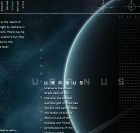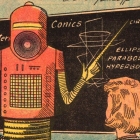-
 +16 +3
+16 +3Don't Let Yourself Get Tangled Up by These 4 Quantum Mechanics Misconceptions
Quantum mechanics, the theory which rules the microworld of atoms and particles, certainly has the X factor.
-
 +4 +1
+4 +1High-Temperature Superconductivity Understood at Last
For decades, a family of crystals has stumped physicists with its baffling ability to superconduct — that is, carry an electric current without any resistance — at far warmer temperatures than other materials. Now, an experiment years in the making has directly visualized superconductivity on the atomic scale in one of these crystals, finally revealing the cause of the phenomenon to nearly everyone’s satisfaction. Electrons appear to nudge each other into a frictionless flow in a manner first suggested by a venerable theory nearly as old as the mystery itself.
-
 +16 +2
+16 +2Does Quantum Entanglement Allow for Faster-Than-Light Communication?
Quantum entanglement allows particles to affect one another faster than the speed of light. So does this mean we could one day build a device to exploit this and enable superluminal communication? A popular trope in sci-fi for sure, but today let's look at the science.
-
 +19 +3
+19 +3Physicists Just Entangled A Pair of Atomic Clocks Six Feet Apart
Few things in the Universe keep the beat as reliably as an atom's pulse.
-
 +14 +1
+14 +1How the Inside of a Black Hole Is Secretly on the Outside
Mysterious “islands” help to explain what happens to information that falls into a black hole
-
 +17 +5
+17 +5Ignition confirmed in a nuclear fusion experiment for the first time
We have ignition. An analysis has confirmed that an experiment conducted in 2021 created a fusion reaction energetic enough to be self-sustaining, which brings it one step closer to being useful as a source of energy.
-
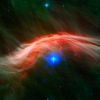 +14 +1
+14 +1A Fast-Moving Star is Colliding With Interstellar gas, Creating a Spectacular bow Shock
Zeta Ophiuchi has had an interesting life. It began as a typical large star about twenty times more massive than the Sun. It spent its days happily orbiting a large companion star until its companion exploded as a supernova about a million years ago. The explosion ejected Zeta Ophiuchi, so now it is speeding away through interstellar space. Of course, the supernova also expelled the outer layers of the companion star, so rather than empty space...
-
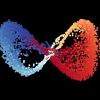 +29 +5
+29 +5Columbia Engineering Roboticists Discover Alternative Physics
A new AI program observed physical phenomena and uncovered relevant variables—a necessary precursor to any physics theory
-
 +12 +2
+12 +2How Electricity Actually Works
Verisatium
-
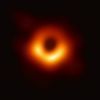 +4 +1
+4 +1Black holes may die differently than we thought
We still don't know exactly what happens when black holes die. Ever since Stephen Hawking discovered that black holes evaporate, we've known that they can potentially disappear from our universe. But our understanding of gravity and quantum mechanics isn't powerful enough to describe the last moments of a black hole's life.
-
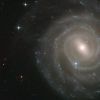 +23 +4
+23 +4Dark matter: our review suggests it's time to ditch it in favour of a new theory of gravity
We can model the motions of planets in the Solar System quite accurately using Newton’s laws of physics. But in the early 1970s, scientists noticed that this didn’t work for disc galaxies – stars at their outer edges, far from the gravitational force of all the matter at their centre – were moving much faster than Newton’s theory predicted.
-
 +14 +2
+14 +2Faster-Than-Light Travel Could Work Within Einstein's Physics, Astrophysicist Shows
For decades, we've dreamed of visiting other star systems. There's just one problem – they're so far away, with conventional spaceflight it would take tens of thousands of years to reach even the closest one.
-
 +16 +2
+16 +2Famous Higgs boson behaves just as expected, 'most comprehensive studies' confirm
The "most comprehensive studies" of the Higgs boson conducted to date reveal that the particle behaves just as expected and could help unlock some of the greatest mysteries of physics, including the nature of dark matter, scientists say.
-
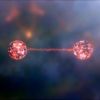 +20 +3
+20 +3Record-setting quantum entanglement connects two atoms across 20 miles
Researchers in Germany have demonstrated quantum entanglement of two atoms separated by 33 km (20.5 miles) of fiber optics. This is a record distance for this kind of communication and marks a breakthrough towards a fast and secure quantum internet.
-
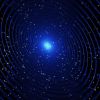 +4 +1
+4 +1Physicists discover never-before seen particle sitting on a tabletop
Researchers have discovered a new particle that is a magnetic relative of the Higgs boson. Whereas the discovery of the Higgs boson required the tremendous particle-accelerating power of the Large Hadron Collider (LHC), this never-before-seen particle — dubbed the axial Higgs boson — was found using an experiment that would fit on a small kitchen countertop.
-
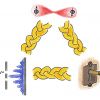 +13 +3
+13 +3A ‘beyond-quantum’ equivalence principle for superposition and entanglement
The physics of the microrealm involves two famous and bizarre concepts: superposition and entanglement. Both are described mathematically by quantum theory, but many physicists believe that one day quantum theory will need to be replaced by an ultimate theory of reality that lies beyond quantum theory. Now, a team of physicists and mathematicians has discovered a new connection between these two weird properties that does not assume that quantum theory is correct. Their work, partially funded by the Foundational Questions Institute, FQXi, confirms that current quantum cryptographic protocols, which promise ultra-secure un-hackable...
-
 +12 +1
+12 +1This particle's heft could hint at a crack in physics’ standard model
There’s something amiss with a mass. A new measurement of the mass of an elementary particle, the W boson, has defied expectations. The result hints at a possible flaw in physicists’ otherwise stalwart theory of the fundamental bits and bobs of our world, known as the standard model.
-
 +12 +2
+12 +2Some Scientists Say Time Might Not Exist at All
Shout out to those of you who enjoy wavering between huge ideas and finding solace in the grey spaces. Some individuals prefer absolutes (good and evil, right and wrong), while others recognise that the majority of our lives take place on a continuum. As it turns out, we are currently seeing one of the most significant such battles: the conventional model of physics vs the quantum model of physics. And, depending on how you look at it, time could not exist at all.
-
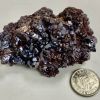 +15 +3
+15 +3Ancient Namibian stone could hold key to future quantum computers
A special form of light made using an ancient Namibian gemstone could be the key to new light-based quantum computers, which could solve long-held scientific mysteries, according to new research led by the University of St Andrews.
-
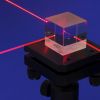 +12 +4
+12 +4A New Tool for Finding Dark Matter Digs Up Nothing
Even the strongest gravitational waves that pass through the planet, created by the distant collisions of black holes, only stretch and compress each mile of Earth’s surface by one-thousandth the diameter of an atom. It’s hard to conceive of how small these ripples in the fabric of spacetime are, let alone detect them. But in 2016, after physicists spent decades building and fine-tuning an instrument called the Laser Interferometer Gravitational-Wave Observatory (LIGO), they got one.
Submit a link
Start a discussion
